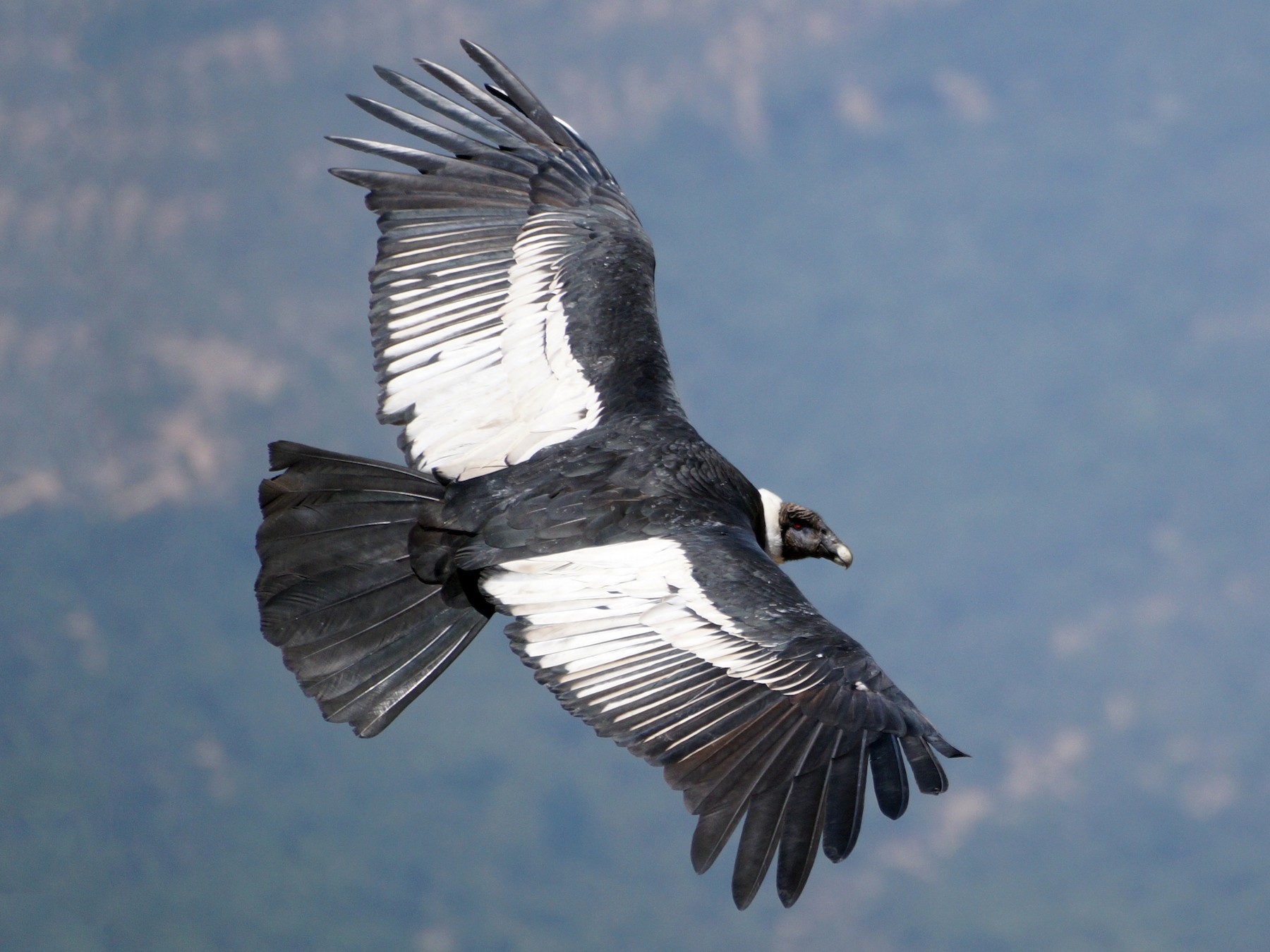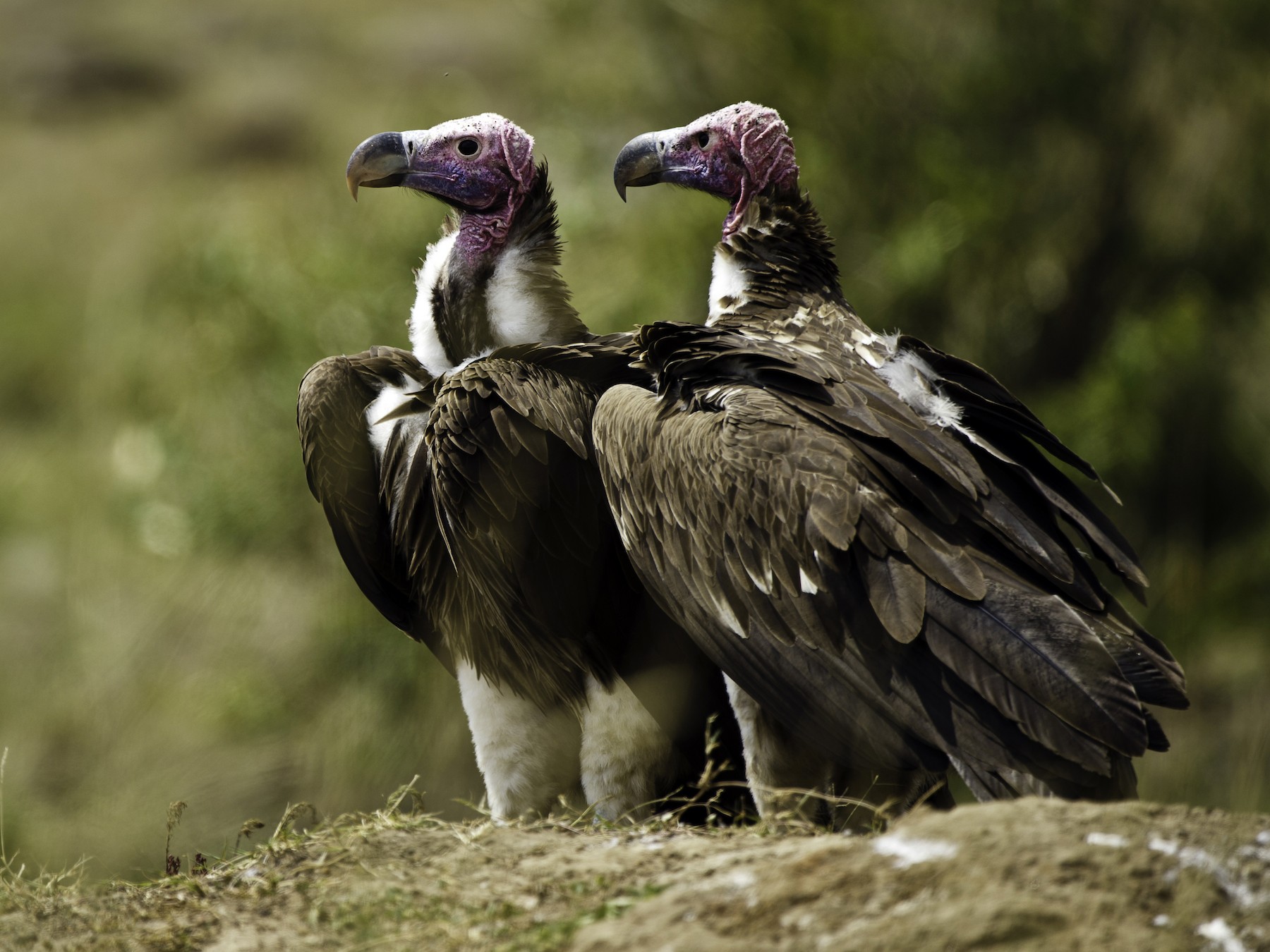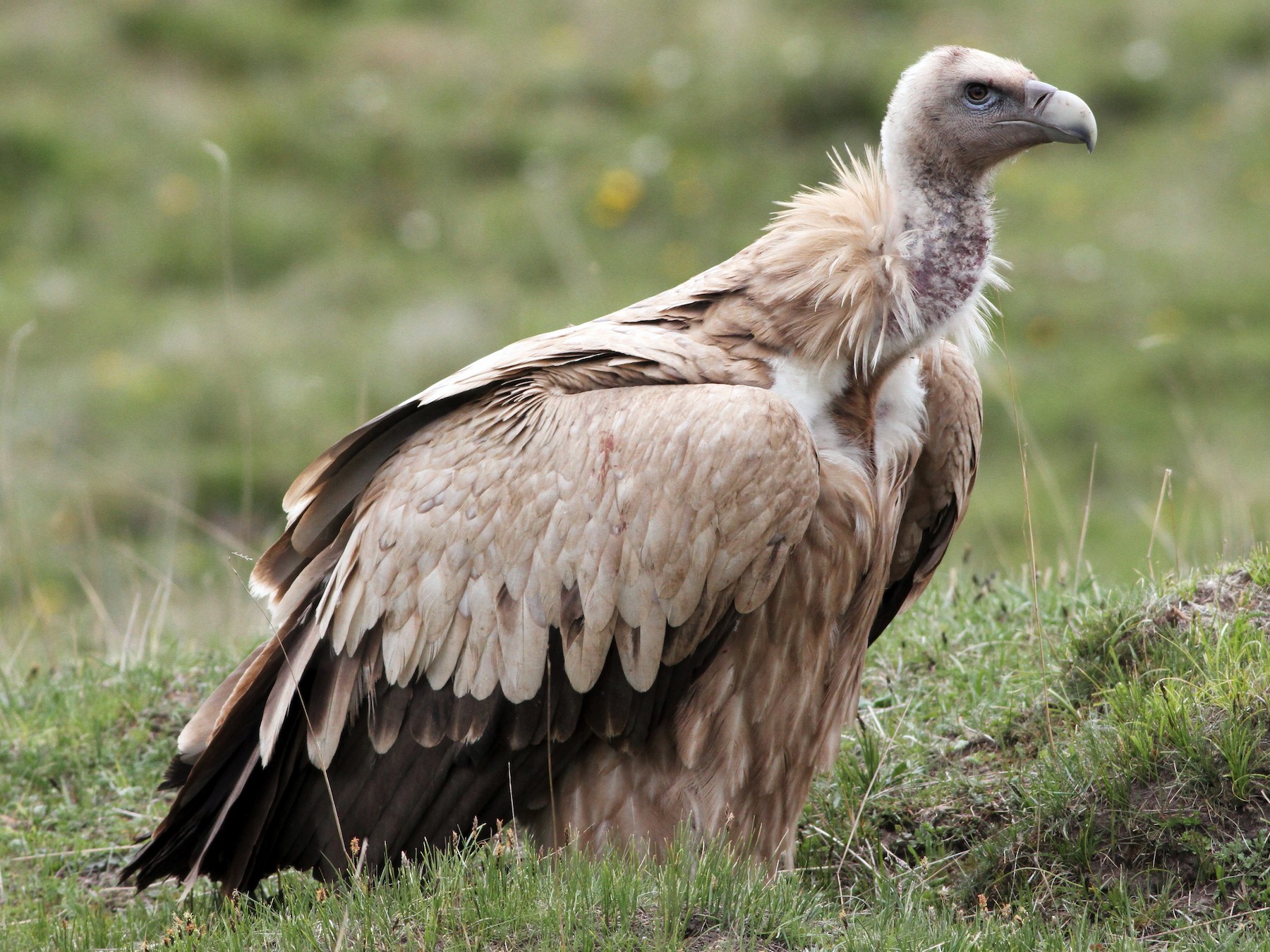Vultures are fascinating birds that play an important role in the ecosystem by cleaning up dead animals and preventing the spread of disease. There are 23 species of vultures in the world, divided into two groups: New World vultures found in North and South America, and Old World vultures found in Africa, Europe, and Asia.
In this article, we will explore the top 10 largest vultures in the world, including their wingspan, weight, and other interesting facts about these impressive birds. From the massive Andean Condor to the powerful Lappet-faced Vulture, these vultures are truly a sight to behold.
You are reading: The Top 10 Largest Vultures In The World

The Top 10 Largest Vultures In The World
Cinereous Vulture (Aegypius monachus)

The Cinereous Vulture (Aegypius monachus) is a large raptor in the family Accipitridae and is distributed through much of temperate Eurasia. It is also known as the black vulture, monk vulture, and Eurasian black vulture.
With a body length of 1.2 m (3 ft 11 in), 3.1 m (10 ft) across the wings, and a maximum weight of 14 kg (31 lb), it is the largest Old World vulture and the largest member of the Accipitridae family. The bald head and neck are a bluish-grey, with a fluffy collar which is lighter in older birds.
In many countries, this bird is called ‘monk vulture’ because of its upright standing neck feathers that resemble the hood of a monk. Cinereous vultures are scavengers and their diet consists mainly of carrion – the remains of dead animals.
These birds breed from October through November, and they mate once a year.
Lappet-faced Vulture (Torgos tracheliotos)

The Lappet-faced Vulture (Torgos tracheliotos) is an Old World vulture and the only member of the genus Torgos. It is not closely related to the New World vultures and does not share their keen sense of smell.
Here are some key characteristics and facts about the Lappet-faced Vulture:
– Appearance: This massive vulture has a bullish, naked, square head, a bulky bluish-yellow beak, and wrinkled loose skin (lappets) on the face.
– Size: The Lappet-faced Vulture is the largest vulture in Africa, measuring around 95–115 cm (37–45 in) in body length, with a wingspan of 2.5–2.9 m (8.2–9.5 ft). It is slightly smaller than the closely related Cinereous Vulture.
– Powerful Scavenger: The Lappet-faced Vulture is considered the most powerful vulture in Africa. It is a scavenging bird, feeding mostly on animal carcasses, which it finds by sight or by following other scavengers.
– Feeding Habits: This vulture can eat up to 1,450 g (51 oz) of food in one meal. Its powerful beak and neck allow it to tear through tough hides and tendons, making it well-suited for consuming large carcasses.
– Habitat: The Lappet-faced Vulture is found in various habitats, including savannas, grasslands, and semi-desert areas. It is known to roost and nest on cliffs and tall trees.
– Conservation Status: The Lappet-faced Vulture is now one of the rarest vultures in the world. It faces threats such as habitat loss, poisoning, and collisions with power lines. Efforts are being made to conserve this species and its habitats.
Himalayan Griffon Vulture (Gyps himalayensis)
The Himalayan Griffon Vulture (Gyps himalayensis) or Himalayan vulture is an Old World vulture native to the Himalayas and the adjoining Tibetan Plateau.
Here are some key characteristics and facts about this impressive bird:
– Size: The Himalayan Griffon Vulture is one of the two largest Old World vultures and true raptors. It has a length of 116-150 cm (3.8-4.9 ft) and a wingspan of 260-310 cm (8.5-10.2 ft).
Read more : Birdhouses On Fence Posts
– Appearance: This vulture has dark brown greater covert feathers, tail, and wing quills, but a pale buff uniform upperside and paler tipped inner secondaries. Its legs are covered with buffy feathers and vary in color from greenish-grey to pale brown. The underside and under-wing coverts are pale brown or buff, almost white in some individuals.
– Habitat: Himalayan Griffon Vultures are found in the uplands of central Asia, ranging from Kazakhstan and Afghanistan in the west to Nepal and Bhutan in the east. They inhabit steppes, valleys, and mountainous regions.
– Feeding Habits: Like other vultures, the Himalayan Griffon Vulture is a scavenger, feeding on carrion. They play an important role in the ecosystem by cleaning up dead animals and preventing the spread of disease.
– Conservation Status: The Himalayan Griffon Vulture is listed as Near Threatened on the IUCN Red List. It is susceptible to toxicity induced by diclofenac, a drug whose residues in domestic animal carcasses have led to rapid declines in vulture populations. Efforts are being made to conserve this species and its habitats.
Andean Condor (Vultur gryphus)
The Andean Condor (Vultur gryphus) is a giant South American Cathartid vulture and is the only member of the genus Vultur.
Here are some key characteristics and facts about this impressive bird:
– Size: The Andean Condor is the largest flying bird in the world by combined measurement of weight and wingspan. It has a body length of around 1.2-1.3 meters (4-4.3 feet) and a wingspan of up to 3.3 meters (10.8 feet).
– Appearance: This vulture has black feathers on its body and wings, with a distinctive white ruff around the base of its neck. It has a bald head, which is usually reddish in color, and a fleshy comb on top of its head.
– Habitat: Andean Condors are found in mountainous regions of western South America, ranging from Colombia and northwestern Venezuela to Tierra del Fuego. They inhabit high montane canyons and peaks throughout the Andes, as well as open grassland areas.
– Feeding Habits: Like other vultures, the Andean Condor is a scavenger, feeding on carrion. They play an important role in the ecosystem by cleaning up dead animals and preventing the spread of disease.
– Conservation Status: The Andean Condor is listed as Near Threatened on the IUCN Red List. It faces threats such as habitat loss, hunting, and poisoning. Efforts are being made to conserve this species and its habitats. The Peregrine Fund, for example, is working to protect Andean Condors by monitoring populations, reducing human-caused mortality, and educating local communities.
California Condor (Gymnogyps californianus)
The California Condor (Gymnogyps californianus) is a New World vulture and the largest North American land bird.
Here are some key characteristics and facts about this impressive bird:
– Size: The California Condor has a wingspan of up to 9.5 feet and can weigh up to 25 pounds. It is one of the largest flying birds in the world.
– Appearance: This vulture has black feathers on its body and wings, with a distinctive white ruff around the base of its neck. It has a bald head, which is usually reddish in color, and a fleshy comb on top of its head.
– Habitat: California Condors are found in the western United States, ranging from California to Arizona and Utah. They inhabit rocky areas, cliffs, and canyons.
– Feeding Habits: Like other vultures, the California Condor is a scavenger, feeding on carrion. They play an important role in the ecosystem by cleaning up dead animals and preventing the spread of disease.
– Conservation Status: The California Condor is listed as Critically Endangered on the IUCN Red List. It faced extinction in the 20th century due to habitat loss, hunting, and lead poisoning from ingesting lead bullets in carcasses. However, conservation efforts have helped to increase the population from a low of 27 individuals in the 1980s to over 400 individuals today. These efforts include captive breeding programs, habitat restoration, and lead bullet bans in certain areas.
White-backed Vulture (Gyps Africanus)
The White-backed Vulture (Gyps Africanus) is an Old World vulture in the family Accipitridae, which also includes eagles, kites, buzzards, and hawks. It is the most common vulture species in the continent of Africa.
Read more : 13 Different Types Of Bird Nests With Pictures
Here are some key characteristics and facts about this bird:
– Appearance: The White-backed Vulture is a large, buff-brown vulture with pale underwing patches and a diagnostic pale rump patch that is best seen in flight. Its wings, which are white on top and brown on the bottom, can reach a span of up to 7.5 feet. Its mostly bald head helps the bird regulate its body temperature during hot days and cool nights, as well as stay clean while it eats because feathers can trap germs.
– Habitat: White-backed Vultures are found in open wooded savanna and scattered trees, such as areas populated by Acacia and Mopane trees. They are highly gregarious, roosting and feeding in large groups.
– Feeding Habits: Like other vultures, the White-backed Vulture is a scavenger, feeding on carrion. They play an important role in the ecosystem by cleaning up dead animals and preventing the spread of disease.
– Conservation Status: The White-backed Vulture is listed as Critically Endangered on the IUCN Red List. It faces threats such as habitat loss, hunting, and poisoning. Efforts are being made to conserve this species and its habitats. For example, the Raptor Taxon Advisory Group is working to establish a Species Survival Plan (SSP) for White-backed Vultures in North America.
Indian Vulture (Gyps indicus)
The Indian Vulture (Gyps indicus) is an Old World vulture native to India, Pakistan, and Nepal.
Read more : 13 Different Types Of Bird Nests With Pictures
Here are some key characteristics and facts about this bird:
Appearance:
– The Indian Vulture is a medium-sized vulture with a pale body and wing-coverts.
– It has a blackish neck with whitish down, a pale yellow bill, and dark brown eyes.
– The head and neck are almost bald, and its bill is rather long.
Habitat:
– Indian Vultures are usually found in savannah and other open habitats around villages, cities, and near cultivated areas.
– They breed mainly on hilly crags in central and peninsular India.
Feeding Habits:
– Like other vultures, the Indian Vulture is a scavenger, feeding on carrion.
– They play an important role in the ecosystem by cleaning up dead animals and preventing the spread of disease.
Conservation Status:
– The Indian Vulture has been listed as Critically Endangered on the IUCN Red List since 2002, as the population severely declined.
– Indian vultures died of kidney failure caused by diclofenac poisoning.
– Efforts are being made to conserve this species and its habitats, such as captive breeding programs and bans on the use of diclofenac in livestock.
Rüppell’s Vulture (Gyps rueppelli)
Rüppell’s Vulture (Gyps rueppelli) is an Old World vulture native to the Sahel region and East Africa.
Read more : 13 Different Types Of Bird Nests With Pictures
Here are some key characteristics and facts about this bird:
Appearance:
– Rüppell’s Vulture is a large bird of prey, noticeably outsizing the closely related white-backed vulture, with which they often occur in the wild.
– Both sexes look alike: mottled brown or black overall with a whitish-brown underbelly and thin, dirty-white fluff covering the head and neck.
– Adults are 85 to 103 cm (33 to 41 in) long, with a wingspan of 2.26 to 2.6 m (7 ft 5 in to 8 ft 6 in), and a weight that ranges from 6.4 to 9 kg (14 to 20 lb).
Habitat:
– Rüppell’s Vultures are found in the Sahel region and East Africa.
– They inhabit arid and semi-arid regions, including deserts, savannas, and grasslands.
Feeding Habits:
– Like other vultures, Rüppell’s Vultures are scavengers, feeding on carrion.
– They play an important role in the ecosystem by cleaning up dead animals and preventing the spread of disease.
Conservation Status:
– Rüppell’s Vulture is listed as Critically Endangered on the IUCN Red List.
– The current population of 22,000 is decreasing due to loss of habitat, incidental poisoning, and other factors.
– Efforts are being made to conserve this species and its habitats. For example, the Raptor Taxon Advisory Group is working to establish a Species Survival Plan (SSP) for Rüppell’s Vultures in North America.
Cape Vulture (Gyps coprotheres)
The Cape Vulture (Gyps coprotheres) is an Old World vulture in the family Accipitridae, endemic to southern Africa.
Read more : 13 Different Types Of Bird Nests With Pictures
Here are some key characteristics and facts about this bird:
Appearance:
– The Cape Vulture is creamy-white, much paler and larger than the White-backed Vulture.
– At close range, the adult’s eyes are honey-colored.
– The average length of adult birds is about 1.2 meters (4 feet), with a wingspan of about 2.6 meters (8.5 feet).
Habitat:
– Cape Vultures are found in mountainous or hilly country, roosting and nesting on large cliffs.
– They also sometimes roost on trees or pylons.
Feeding Habits:
– Like other vultures, the Cape Vulture is a scavenger, feeding on carrion.
– They play an important role in the ecosystem by cleaning up dead animals and preventing the spread of disease.
– This vulture is known for its massive capacity for carrion (dead and decaying flesh), managing to eat an astounding kilogram or more in just a few minutes of feeding.
Conservation Status:
– The Cape Vulture is listed as Vulnerable on the IUCN Red List.
– The current population of 9,600-12,800 is decreasing rapidly.
– The main threats to this species are habitat loss, poisoning, and collisions with power lines.
– Efforts are being made to conserve this species and its habitats. For example, the Raptor Taxon Advisory Group is working to establish a Species Survival Plan (SSP) for Cape Vultures in North America.
Bearded Vulture (Gypaetus barbatus)
The Bearded Vulture (Gypaetus barbatus) is a large bird of prey and the only member of the genus Gypaetus.
Read more : 13 Different Types Of Bird Nests With Pictures
Here are some key characteristics and facts about this bird:
Appearance:
– Bearded vultures are extremely large vultures that range in weight from 4.5 to 7.0 kg, have a total length between 94 and 125 cm and a much longer wingspan of up to 2.8 meters (9.2 feet).
– They have a distinctive appearance, with a reddish-orange to yellow bill, a black mustache-like stripe on their face, and a shaggy, white neck ruff that gives them their name.
Habitat:
– Bearded Vultures are found in mountainous regions of southern Europe, Asia, and Africa.
– They inhabit high-altitude areas, such as rocky cliffs, ledges, and crags.
Feeding Habits:
– Bearded Vultures are scavengers, feeding on carrion.
– They are known for their unique feeding behavior, which involves dropping bones from a height to crack them open and access the marrow inside.
– They also feed on live prey, such as tortoises and small mammals.
Conservation Status:
– The Bearded Vulture is listed as Near Threatened on the IUCN Red List.
– The current population of 10,000-20,000 is decreasing.
– The main threats to this species are habitat loss, poisoning, and collisions with power lines.
– Efforts are being made to conserve this species and its habitats. For example, reintroduction programs have been successful in the Alps and Spain.
FAQS
1. What do vultures eat?
Vultures are scavengers and feed on carrion, which means they eat dead animals.
2. What is the role of vultures in the ecosystem?
Vultures play an important role in the ecosystem by cleaning up dead animals and preventing the spread of disease.
3. Where do vultures live?
Vultures are found all over the world, except for Australia and Antarctica. They inhabit a variety of habitats, including deserts, grasslands, forests, and mountains.
4. Are vultures dangerous to humans or pets?
No, vultures are not a threat to humans or pets. They are scavengers and do not hunt live prey.
5. What is the conservation status of vultures?
Many vulture species are threatened with extinction due to habitat loss, hunting, poisoning, and other factors. Efforts are being made to conserve vultures and their habitats.
6. What is the largest vulture in the world?
The Andean Condor is the largest flying bird in the world by combined measurement of weight and wingspan.
Source: https://petstutorial.com
Category: Birds










